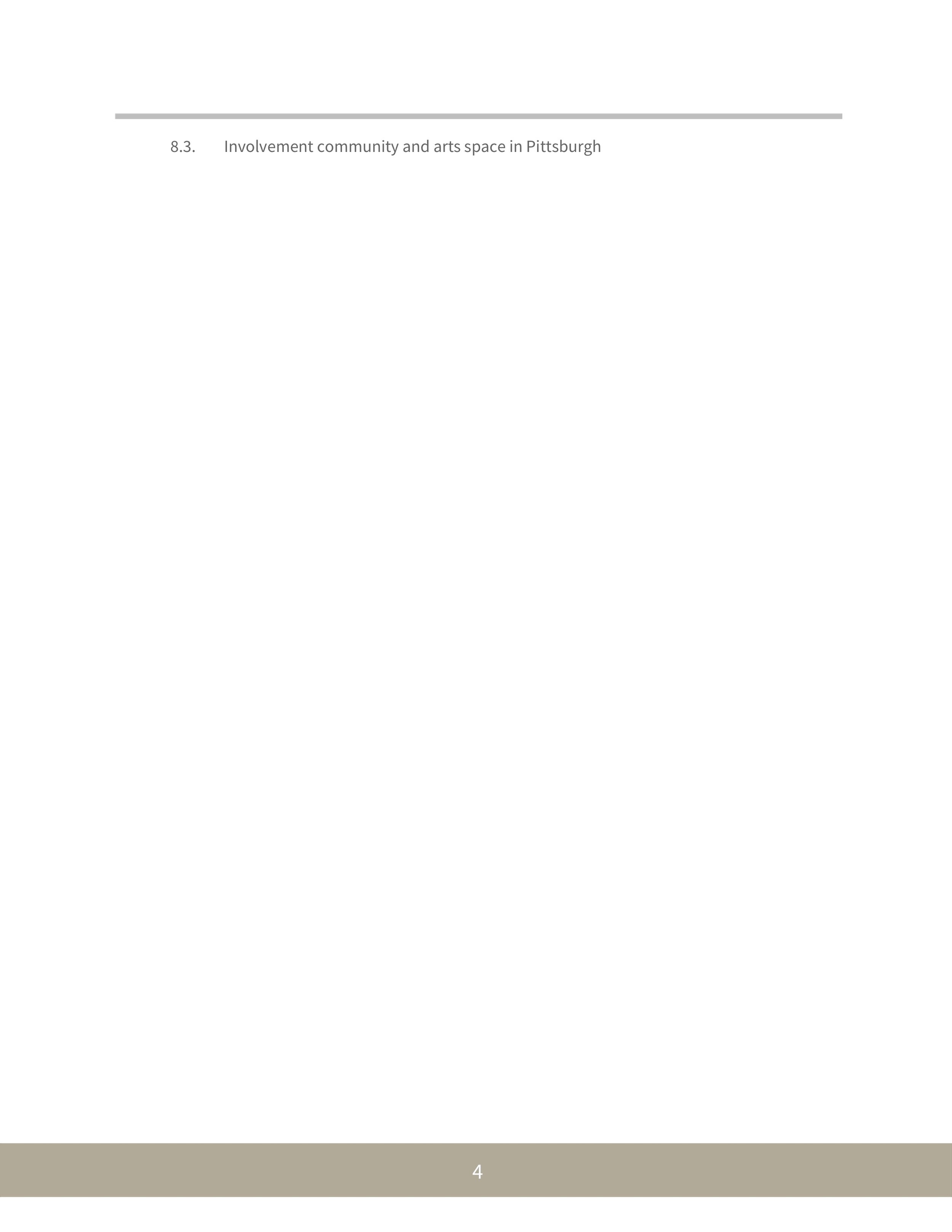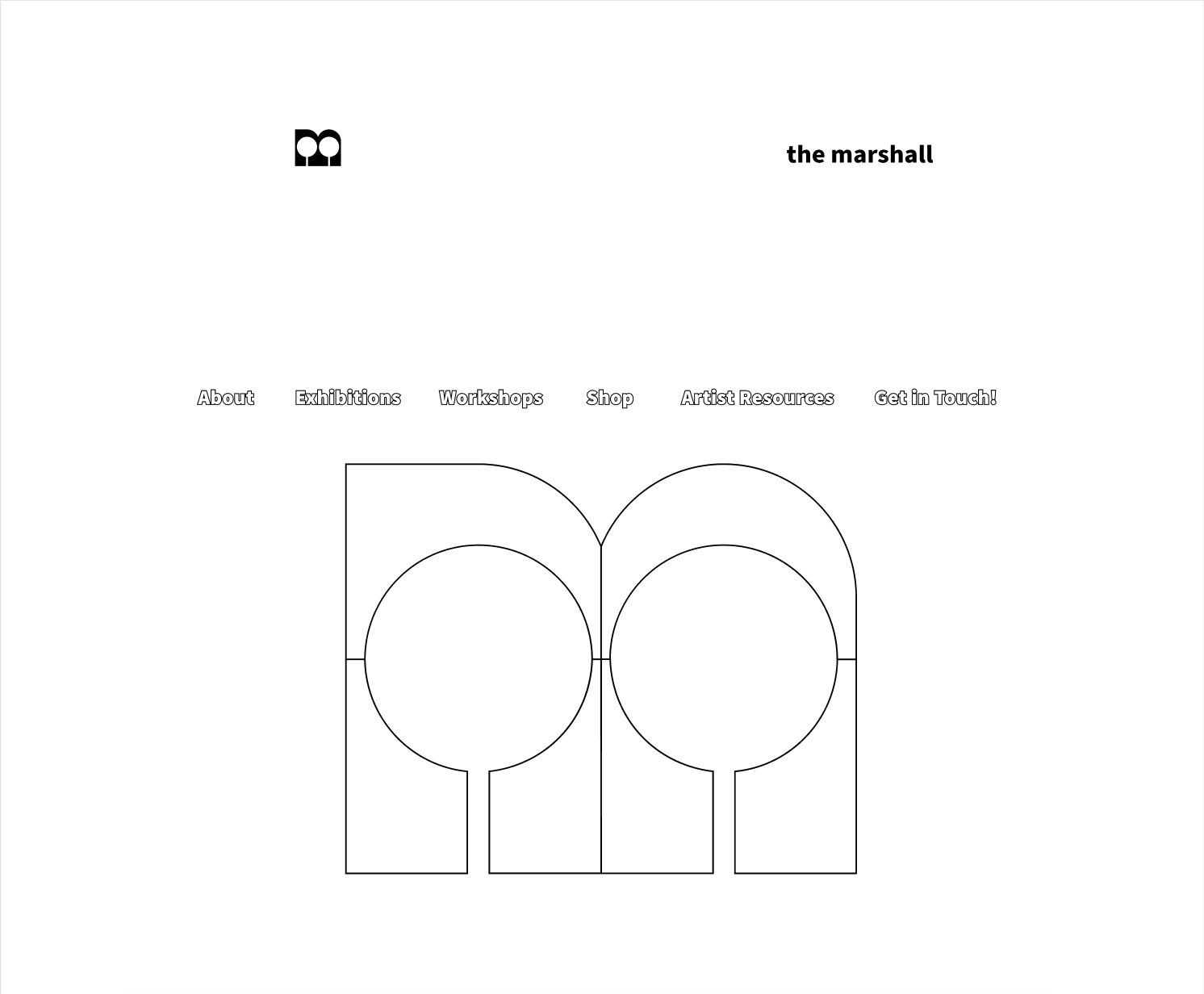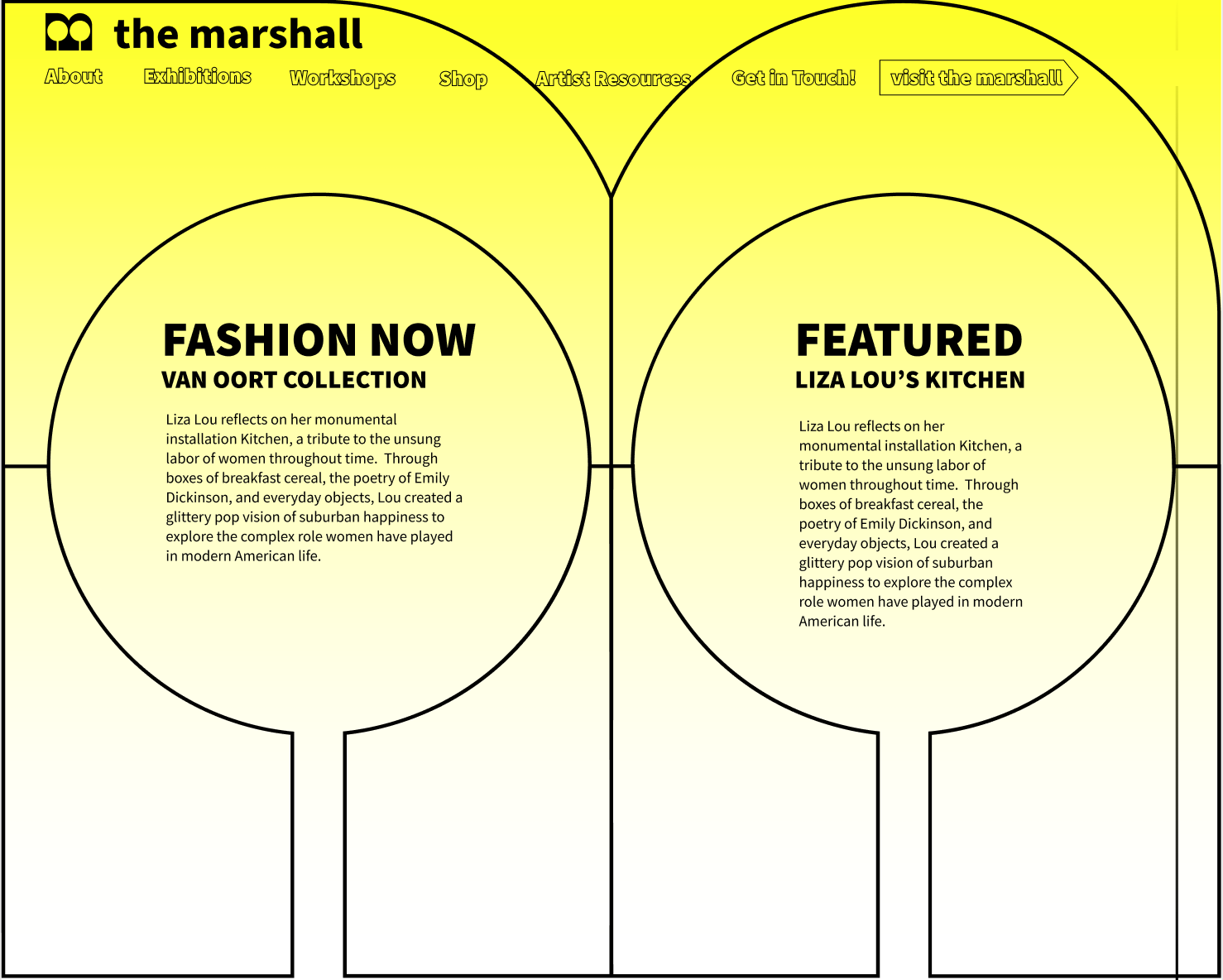The Marshall: Designing a 21st Century Arts Organization
In this project we worked with Charlie Humphrey (the Executive Director of the Pittsburgh Center for the Arts) to create, model and design a progressive and accessible arts center within the Marshall Building. This massive space in central Pittsburgh is reserved for the arts. The previous model in place had disbanded and we were brought on to engage with stakeholders, community members, and a diverse range of artists. Through our interviews, stakeholder design workshops, interventions, and conceptual branding, we created a model to inspire what the space could become rather than what many think it should become.
Mission Statement
The Marshall is a dynamic Pittsburgh arts space. It supports emerging art practices, independent artists, and established organizations to engage new audiences and continue fostering long-term relationships with all aspects of the Pittsburgh Arts Community.
A Project done with Erin Ryan and Tammar Zea-Wolfson
My Work: Identity, Web, Physical Signage and Print
Process
As head of branding, my first step in translating these values into a design was thinking about the “identity” of the historic building and new opportunities it held.
For a name: We felt the simplicity and memorability of the The Marshall was a good fit paying homage to its roots.
For the visual identity: The reimagined logo on the right has a strong base representing the rich history while the round counters suggest an open, dynamic, and inclusive space. The logo can be both playful as seen in the animations or become more serious depending on the context. In both contexts it remains thoroughly modern and intriguing, inviting the Pittsburgh community in. The identity design would carry over from physical signage and advertising to an online presence.
Original Mood-board
Web
Landing Page
Professional and engaging, the logo acts as a menu that coordinates with the left side navigation, clicking the text or image in the logo will bring you to that part of the site.
Each part of the logo is filled with an image of local art, connected to current exhibitions in The Marshall. As the exhibitions, performances, and installations in The Marshall change so do the images in the menu logo on the front page of the site.
This shows how ever changing and responsive the digital and physical spaces of The Marshall are.
Artist Resources Web Run-through
For this scenario we will be looking from the perspective of a local artist. This artist recently had their work in one of the pop-up events hosted by The Marshall, at this event they sold a few pieces, met some interesting folks and were encouraged by the organizer to go to the website to check out the flight school fellowship.
The artist will find their way down the menu to the “artist resources” tab, there they find an option for the fellowship “flight school”, professional development, and how to apply to have work in The Marshall. Once on the fellowship page there is a video and information as well as application process and eligibility.
Intrigued they click apply and are taken to an application page where they might pursue a place as a biannual fellow at The Marshall.
prototypes and process
below are prototypes that came before the final site above
Community Driven Design Process
Through community facing workshops, interviews, phone meetings, and surveys we’ve developed a better understanding of the values and priorities of the community. These priorities and values form the basis for the proposed designs.
Workshop led by Tammar Zea-Wolfson, Erin Ryan and Liam van Oort
Step 1: Stakeholder Workshop
Our first workshop was designed to invite stakeholders to both bring issues to light and force them to think of solutions. It was an opportunity to come together to imagine how we might revitalize the role of the Marshall Building for our community and a forge a vision for the future of this program.
Nearly thirty workshop participants were asked to temporally think through the lens of one of three working groups: Facilities, History and Current State of the Organization, and Programing and Outreach. Each working group’s insights, recommendations, and ideas were captured in these templates below and their insights in the recorded pages of our process.
We began with and exercise named rose, bud, thorn as a way to generate as many ideas as possible. From there we narrowed down the groups’ most important items and created possible action items to pair with. From there we brought all groups together to each choose three of their points and place them on an XY chart that compared impact to effort.
storyboarded by Erin Ryan
RECOMMENDATIONS AND ACTIONABLE ITEMS FROM THE WORKSHOP:
* Terms and conditions of the gift from the the Marshalls
* Creative partnerships that bring in money and people
* Connecting Mellon Park to the galleries
* Engaging youth (field trips, after school activities, education)
* Marketing continuously for exhibits
* Coffee shop/ working space to increase activity in the space
* Securing stable funding for nimble organization and programing
* Specialized outreach to reach more diverse audience
* Improved way-finding, outreach, and branding
* More community art visible to the public
* More organizations in the building and/ or securing an anchor tenant
* Seek competitive bids for renovations such as ADA upgrades and gallery revisions
* Recruit a Board of people with business/ professional and arts based expertise Artists should be on the board too
* We need a structure that is more fiscally responsible, with an artists advisory committee
- Written by Tammar Zea-Wolfson
“Postcards from the future” were passed around for people to write a message about what The Marshall is like in the future and allowed stakeholders to draw what the space looks like
Step 2: Storyboard/ Intervention
To begin delivering a “vision” for a new Community Arts Center we begin gathering inspiration, case studies, sketching, and surveying. -Tammar
After our workshops with stakeholders, as a team we begin to create storyboards and interventions within the community to find out how people engage with the arts community and what that may look like. This quick exercise brought us to create an art hike app to help us understand quantitatively how certain communities in Pittsburgh engage with the art scene.
Created by Erin Ryan
Created by Erin Ryan
During one of Pittsburgh’s art events called “First Fridays” Erin Ryan created a participatory design exercise that would have people engage with a map to tell us where people are from and the amount of engagement they’ve had with arts events like “First Friday’s”
Step 3: Small Working Groups
Group Workshop
Building off of the insights of the larger workshop, we met with stakeholders to prioritize their programming interests, discuss possible scenarios centered around business models, and think about how that might translate to the space of the Marshall
Key insights:
Offering multiple attractions: Galleries, a shop, classes, events, coffee shop etc. - This will ensure that there is reason for someone to be want to come every day
A managing board of directors: a board that shares commons interests in preserving healthy communication with the community to maintain longevity
Showing and selling local work: Through the shop and local events, local artists will be able to represent the Pittsburgh art community while drawing in people from the community
-Written by Tammar Zea-Wolfson
Business Plan




Business plan by Liam Van Oort ^
Following our research pathway into alternative economics that might apply to Marshall management/ organizational structures we used a provided template to map out a model with for-profit anchor tenets providing revenue streams.
Part of a business plan, regardless of the “model”, is the frequently discussed need for a brand identity for the space and associated organization.
-Tammar Zea Wolfson
Initial ideation for Business Plan by Liam van Oort
Final Presentation
for CMU School of Design, The Marshall Stakeholders, and Pittsburgh City Council Members


































